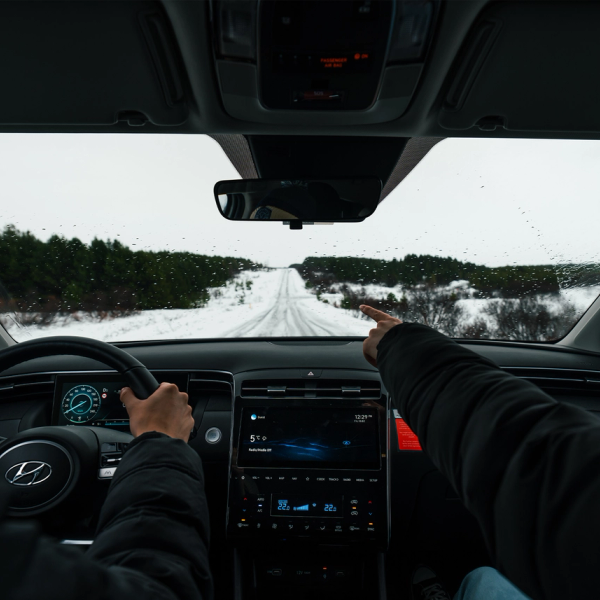
Driving in the North: A Complete Guide to Iceland’s Roads & Road Conditions
Not many countries in the world have as many amazing places and natural wonders as Iceland has. Here you can find volcanic fields, glaciers, vast black-sand beaches, waterfalls, and much more.
The best way to get to all these places is by car. Renting a vehicle will allow you to travel all around the country at your own pace. And not only that, driving around the country is an experience in itself, as the landscapes you’ll see from the road are amazing. However, to fully explore these wonders, you'll need to navigate Iceland's unique road system.
While driving in Iceland can be an unforgettable experience, it's essential to be well-prepared for the different kinds of roads and know how to act on the road. In this guide, we’ll explain how the road system works in Iceland, as well as the road types, driving conditions, seasonal variations, and essential travel tips to ensure your journey is as safe as it is memorable.
Key takeaways
- Iceland has 4 different types of roads: the Ring Road, gravel roads, urban roads, and F-roads
- While driving in Iceland is usually easy and pleasant, there are some challenges to be aware of.
- Road conditions vary greatly from one season to another.
Road types in Iceland
Iceland's road system is surprisingly diverse, given its small population and the relatively modest size of the country. The roads change significantly depending on the region, and you will find a bit of everything, from smooth highways to rugged mountain tracks. Understanding the different road types is crucial for planning your trip and ensuring you’re adequately prepared for the conditions you’ll encounter.
Ring Road (Route 1)
The Ring Road, or Route 1, is Iceland's main highway, circling the entire island. It has a length of 1,332 kilometers (828 miles) and goes not far from the coast, connecting the major towns and tourist destinations. It’s, basically, the backbone of Iceland's road system.
The Ring Road is generally well-maintained and mostly paved, making it accessible for all vehicle types. Many secondary roads depart from it to reach all parts of the country. It’s an easy drive on paper, but parts of the Ring Road can be challenging due to weather conditions and narrow bridges that are common along the route.
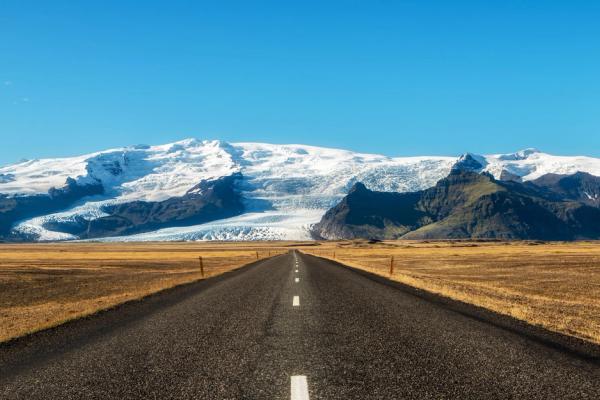
Gravel roads
Apart from the Ring Road and other main highways, many of Iceland's rural roads are mainly gravel. These roads can be tricky to navigate, especially for those unfamiliar with driving on this kind of surface. While you don't necessarily need a 4x4 for most gravel roads, caution is advised, particularly in adverse weather conditions.
Driving on gravel requires slower speeds to maintain control of the vehicle and avoid damaging tires or other parts of the car. Be careful when driving behind another vehicle. Pieces of gravel can be projected from the tires and chip your windscreen, so keep your distance.
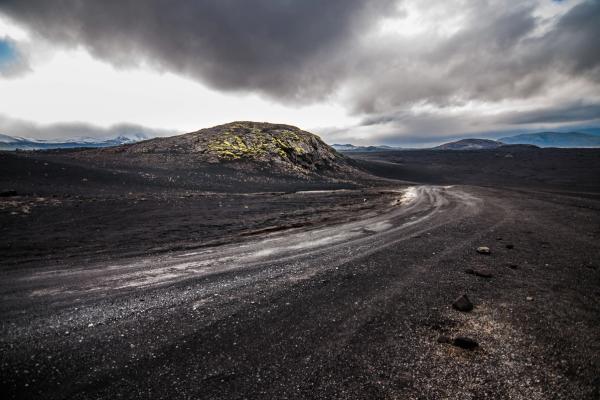
Urban roads
Urban roads in Iceland, particularly in Reykjavik and other major towns, are generally in good condition and easy to navigate. These roads are paved and well-maintained, though traffic signs and parking regulations can be strict.
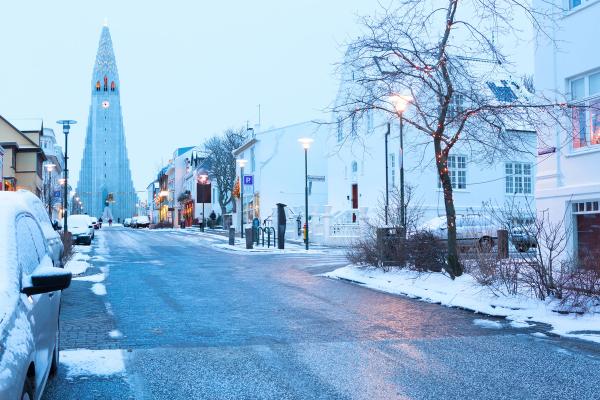
F-Roads
We finally get to the well-known Iceland’s F-roads, located in some inner parts of the country, especially mountain areas. These roads are gravel tracks that lead to some of the most remote and breathtaking landscapes in the country.
However, driving on F-roads requires a 4x4 vehicle, as they are often rough, unpaved, and include river crossings. F-roads are only open during the summer months (typically from late June to early September), as they become impassable due to snow and ice in the winter.
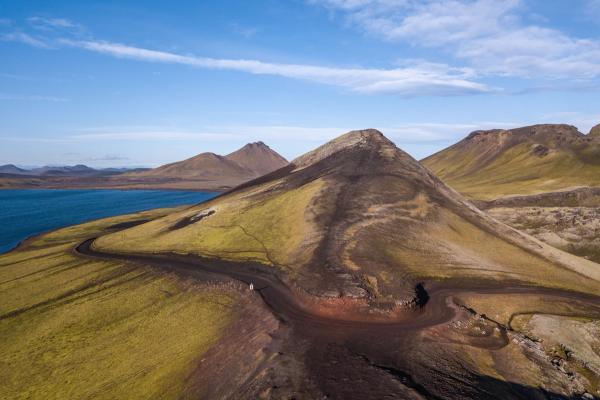
Driving & Road Conditions in Iceland
What can have the biggest impact on the driving experience in Iceland is the weather. The country’s climate can be very unpredictable and change quite a lot, from sudden snowstorms and high winds to rapidly changing road surfaces. For this reason, it’s important to be prepared for the different situations we can encounter while driving here.
Weather-related challenges
The most famous feature of the weather in Iceland is how quickly it can change. On a single day, you might experience sunshine, rain, snow, and fog. This unpredictability means that road conditions can change rapidly. The wind is a particularly challenging factor, as Iceland experiences some of the strongest winds in Europe, which can make driving difficult, especially in exposed areas.
In winter, snow and ice are common, making roads slippery and visibility poor, especially with the short daylight hours, as most of the day is dark. In contrast, the summer months offer more stable driving conditions, though rain and fog can still be frequent.
Narrow roads and bridges
Many of Iceland's roads, especially in rural areas, are narrow, with single-lane bridges being a common feature. These narrow roads require careful navigation and sometimes a bit of patience, as you may need to yield to oncoming traffic. The rule is that the vehicle closest to the bridge has the right of way, so approach these bridges with caution and be prepared to give way if necessary.
The Ring Road, despite being the main highway, has several narrow sections and bridges, so it's important to drive cautiously, particularly in poor weather.
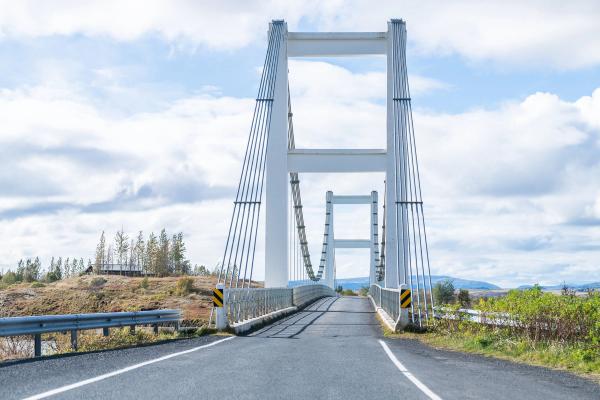
Potholes and gravel
As we have explained before, gravel roads are pretty common in Iceland. They are usually well-maintained but are more affected and eroded when the weather is harsh. For this reason, it’s common to find potholes in them. You may encounter potholes even on paved roads.
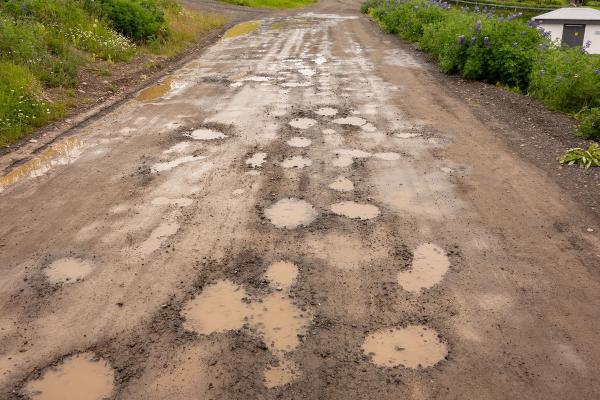
Road maintenance and closures
As the weather affects roads so much, road maintenance in Iceland is continuously happening. During winter, snow plows work to keep the main roads clear, but some roads, particularly in the highlands, are closed entirely. The authorities take this decision when they consider a road or sector is impassable.
It's important to check road conditions and closures before setting out on a journey. The Icelandic Road and Coastal Administration provides real-time updates on road conditions, which can be invaluable for planning your route.
Driving in Different Seasons
The time of year you visit Iceland will have a great influence on your driving experience. Each season presents its own set of challenges and advantages, and being prepared for them can make a significant difference to your trip.
Summer (June to August)
This is the most popular time for tourists to come to Iceland, and for good reason. The days are long, with almost 24 hours of daylight around the summer solstice, making it possible to explore the island at any time of day. The roads are generally clear of snow and ice, and all of the F-roads in the highlands are usually open. It’s the best time to reach every corner of the islands with little chance of setbacks.
But summer also brings its own challenges. It’s peak season, which means more tourists in the country, so roads experience more traffic, especially the most popular routes, like the Golden Circle or the Diamond Circle.
While the weather is more stable, rain and fog are still common. It's also important to note that even in summer, the weather can be unpredictable, so always be prepared for sudden changes.
Winter (November to March)
Coming to Iceland in winter has many advantages but also some disadvantages. And one of them is driving. The days are short, with only a few hours of daylight, especially around the winter solstice, and the weather can be harsh. Snow, ice, and high winds are common, making driving conditions challenging. Many roads in the highlands and rural areas, especially the F-roads, are closed during this time, limiting access to certain parts of the country.
Despite these challenges, winter offers a unique and magical experience in Iceland. The landscape is transformed into a winter wonderland, and it’s the best time of the year to see the Northern Lights.
If you’re planning to drive in winter, make sure your vehicle is equipped with winter tires, and consider renting a 4x4 for extra safety.
Spring (April and May) and Autumn (September and October)
Although these two seasons have some differences, they are pretty simmilar regarding driving conditions. In these seasons, rain is frequent, with the possibility of snow in the early spring and late autumn. These seasons are less crowded than summer, making them a great time to visit if you are looking for a quieter experience.
During these times, most of the main roads are accessible, but some of the highland roads (F-roads) may still be closed. If you’re traveling here, be prepared for a mix of conditions, and always check the latest weather and road updates.
| Summer (June to August) | Roads clear of snow and ice; Highland F-roads usually open | Roads are more crowded |
| Winter (November to March) | Best time to see the Northern Lights | Harsh road conditions; Many roads are closed |
| Spring (April and May) | Mostly good road conditions & most roads are open; Less crowded than summer | Chances of rain |
| Autumn (September and October | Mostly good road conditions & most roads are open; Less crowded than summer | Chances of early snow |
Travel Tips
- Check the weather and road conditions: This is crucial to make the most of your trip. Always check the weather forecast and road conditions before departing to help you plan your route.
- Rent the right vehicle: If you’re planning to explore the highlands or drive in winter, having a 4x4 vehicle is essential. For summer trips on the Ring Road and paved routes, a regular car is enough, but consider your itinerary and the types of roads you’ll be driving through.
- Drive with caution: Iceland's roads can be narrow and challenging, especially in rural areas. Follow local driving customs, obey speed limits, and always use turn signals. If you need to stop for photos or a break, pull off the road to a safe parking area to avoid obstructing traffic.
- Respect nature: Iceland's natural landscapes are fragile, and it’s everyone’s duty to help preserve them. Stick to marked roads and parking areas to avoid damaging the environment. Off-road driving is illegal and can result in fines.
- Fuel stops: Fuel stations can be sparse in remote areas, so it's essential to fill up whenever you have the opportunity. Running out of fuel in the middle of nowhere can be both inconvenient and dangerous.
- Follow local regulations: Iceland has strict traffic laws, including speed limits, and wearing a seatbelt is mandatory at all times. Make sure you are familiar with the national traffic laws to avoid breaking them.
Conclusion
Driving in Iceland is a unique and unforgettable experience. It’s, without a doubt, the best way to get to know the country. Having your own vehicle also allows you to do everything at your own pace and plan things your way. However, the country’s road system and driving conditions can present challenges, particularly for those unfamiliar with Iceland’s rugged terrain and unpredictable weather.
By understanding the different road types and how the different conditions can affect your driving experience, your trip can improve substantially. Adapting to these circumstances is much easier than it looks, so pack your bags, rent your vehicle, and get ready for one of the best travel experiences of your life.

